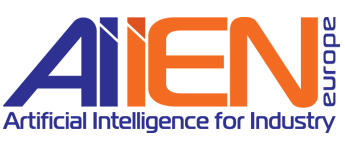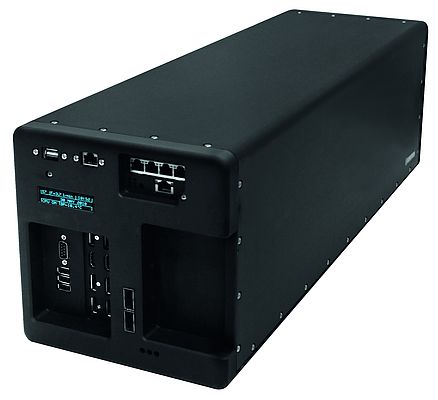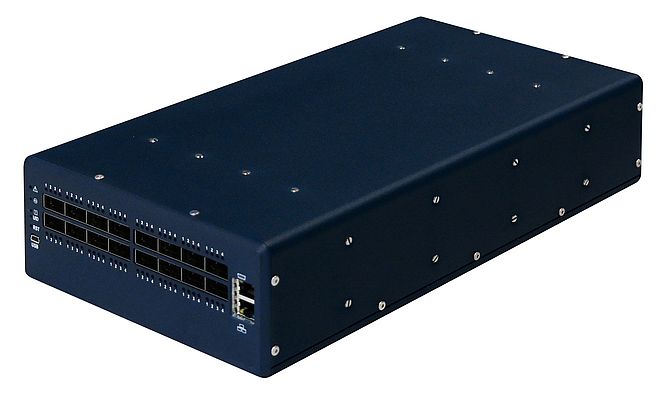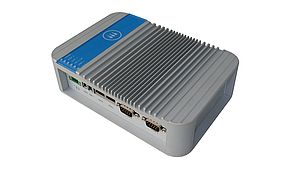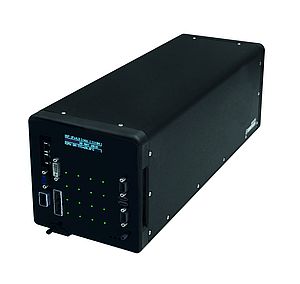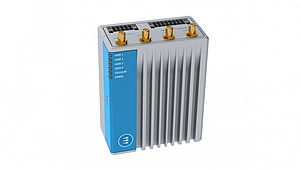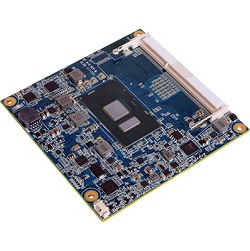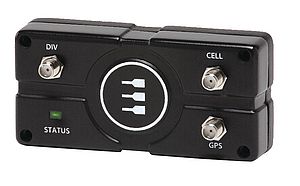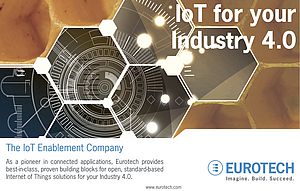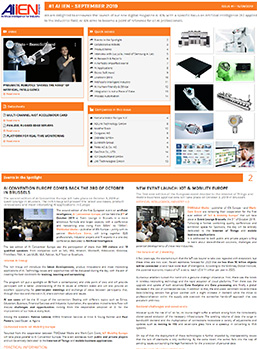A Level 5 vehicle does not require any control from human beings: steering wheel, brake and acceleration pedals are completely removed, and the vehicle determines every action in all conditions.
The Automotive Industry alone is spending billions of dollars in investments for developing autonomous driving technologies, and numerous other vertical markets, such as Defense, are also active on similar roadmaps.
The challenges of Level 5 autonomous driving
All these players are encountering a number of new challenges that span across many disciplines and technologies. In this article we will focus on hardware requirements that are completely novel and how to meet them.
Performance
Sensors, LIDARS and other technologies supporting autonomous driving generate unprecedented amounts of data. They require ultra-high computational performance that goes beyond the traditional embedded computer capabilities.
Some sophisticated sensors require a bandwidth of 40Gb/s to transfer data, not only in peak conditions, but for continuous operations. Moreover, Level 5 autonomous driving applications require constant, reliable and real-time operations while keeping latency as low as possible.
Storage capacity
Autonomous driving applications largely exceed the storage capacity of typical embedded computing devices. Thinking about the 40Gb/s bandwidth mentioned above, it translates to almost 20TB in only an hour of operations.
Ruggedness
High Performance Embedded Computing (HPEC) systems and data loggers installed on vehicles must provide reliable, continuous operations for long period of time. They must operate in very harsh environments: withstanding shocks, vibrations, dust and wide temperature ranges.
Certifications
Embedded and electronic systems and Edge computers installed into vehicles must comply with industry standards. Automotive certifications, such as E-Mark and IEC 60068-2-6 / 60068-2-27 for shock and vibration are objective ways for characterizing the behavior of the system under stress in actual operating conditions.
Compactness
Space is more than often at a premium in embedded applications. Systems designed to fit into embedded environments must come with compact size, to be easily installed into vehicles.
However, HPEC systems provide tremendous amount of computational power and they easily heat up. Dissipating such an intense heat would require a proper and powerful cooling system that can be easily installed in the vehicle.
Cooling
High Performance Computing systems are typically bulkier than embedded systems due to heat dissipation issues: they are usually equipped with big fans that cannot be used in embedded applications where performance is sacrificed to adapt to space constraints.
Eurotech has a lot of expertise in designing liquid-cooled HPC (High Performance Computing) and HPEC systems. Liquid cooling is an ideal solution for HPEC systems in Autonomous Driving, as most of the cars are already equipped with liquid cooling systems.
Compared to air cooling, liquid cooling allows more computational density and a better energy efficiency: even though Eurotech’s HPEC systems can use up to 500W, the coolant would maintain a temperature of around 41-43°C.
Bringing data center-class performance into vehicles
In the past 25 years, Eurotech has offered HPC (High Performance Computing) and HPEC (High Performance Embedded Computing) solutions to customers seeking cutting edge performance and reliability. The latest product portfolio delivers a complete set of devices to allow building sophisticated and resilient computational architectures in the Field.
Edge training and inference: bringing AI to the Edge
The DynaCOR 50-35 is an HPEC server based on dual Intel Xeon E5-2600 CPUs and up to 2x NVIDIA GTX 1070 GPU cards that Enable Edge AI applications. The combination of CPUs and CPUs enable the processing of deep learning algorithms to allow inference and training of AI models directly in the field. This enables in-vehicle systems to autonomously provide responses to enable Level 5 autonomous driving.
Unprecedented data logging capacity
The DynaCOR 40-34 brings unprecedented networking storage capabilities with up to to 2x 7.68TB NVMe SSD and 2x40/56GbE ports. Powered by the Intel Xeon E3 CPU family, it features 32GB of soldered-down RAM and one 256GB SATA SSD.
The DynaCOR 40-35 features up to 123TB raw capacity and 2x100GbE ports, for a sustained data transfer of up to 6GByte/s; the system supports advanced RAID configurations to provide extra performance and data protection. Powered by the Intel Xeon D2100 CPU family with up to 16 cores and 3.00 GHz of turbo clock speed, it features 64GB of soldered-down ECC DDR4-2400 MT/s and one 512GB NVMe for the system image and user applications.
The DynaCOR 40-34 and DynaCOR 40-35 feature an optional vehicle Docking Station: systems can be quickly swapped to make data instantly available for off-vehicle processing.
All DynaCOR systems (including the DynaCOR 50-35) are largely configurable and more configuration options are available through Eurotech Professional Services: the system’s active midplane provides up to 96 PCIe lanes for additional GPUs, NVMe, high-speed networking cards and specialized modules, such as vehicle bus interfaces, high speed frame grabbers and more.
Extreme networking performance with HPEC switches
The DynaNET 10G-01 features 52 GbE ports for a total 176Gb/s switching capacity: the ports can be stacked to further increase the port count, or can be connected to a 40Gb/s backbone. It represents the ideal solution for applications where a large number of devices and sensors such as LIDARs, RADARs and high definition cameras – typically found in autonomous vehicles - need to be reliably connected.
The DynaNET 100G-01 is an ideal fit for applications where extreme networking performance, reliability and compactness are required, such as Autonomous Driving, Artificial Vision and HPEC. It features a total throughput of 3.2Tbs, a processing capacity of 2.38Bpps and 300ns port-to-port latency, delivering significant benefits in terms of data traffic predictability at very low latency. It provides a 16x 40/56/100GbE ports backbone infrastructure that can be split up to 32x 50GbE or 64x10/25GbE to increase the port count.
Both the DynaNET 10G-01 and the DynaNET 100G-01 feature Layer 3 switching, allowing great control over traffic and a more deterministic management of services and data streams. This will benefit all those applications where it is necessary to avoid data starvation and preserve the deterministic behavior of the network.
